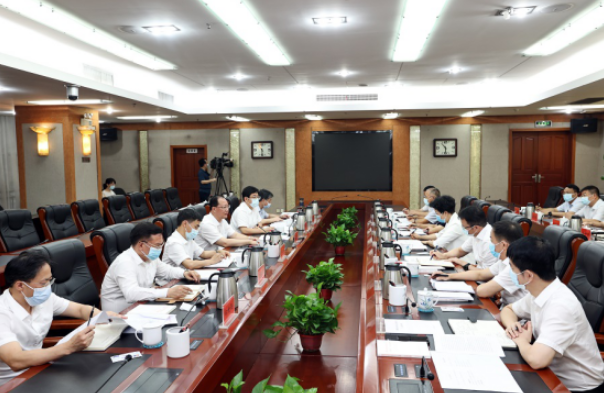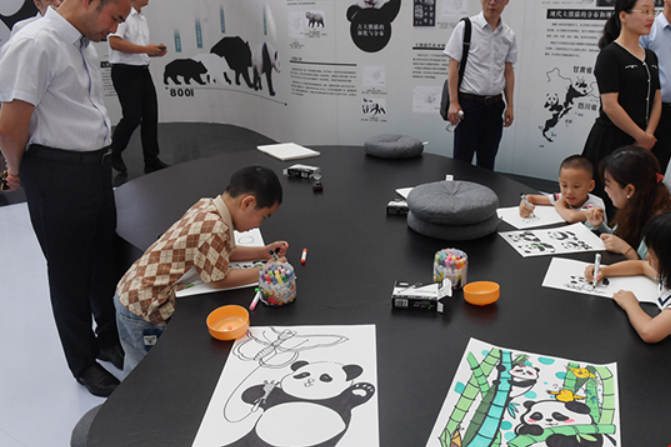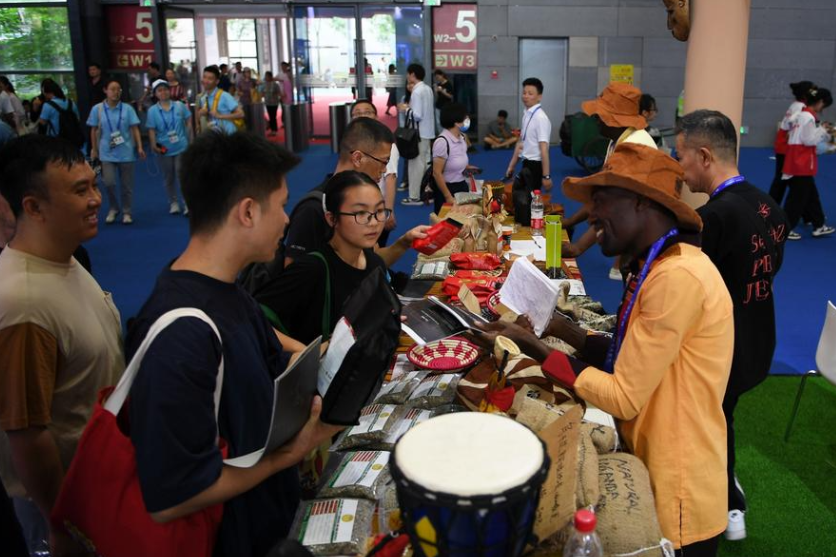Having committed himself to the same territory since 1994, 55-year-old Peng Shiwen has become very familiar with the terrain he safeguards. As a ranger of the State-owned Zhangjiajie forest farm in Hunan province, his daily routine includes patrolling the secluded wood-covered mountains and staying vigilant for signs of fire. "After all these years, I've grown accustomed to my simple life in the forest farm and formed a deep emotional connection with it. I consider the forest ranger station as my home and green mountains and woods as my companions," he says. Peng recalls that in the past, he had to communicate with other rangers with a walkie-talkie or face-to-face, but nowadays, thanks to new technology, they're able to use smartphones and update their patrol trails and work logs in an app. "Our working conditions are much better, with tools such as drones that patrol specific areas regularly and plan routes. We do manual patrol every day and focus on forest fire prevention and safeguarding against pine wilt disease," he says. The forest farm is part of the Wulingyuan Scenic and Historic Interest Area, which was inscribed as a UNESCO World Natural Heritage Site in 1992. It meets the criteria for the assessment of outstanding universal value — "containing superlative natural phenomena or areas of exceptional natural beauty and aesthetic importance". A spectacular area stretching over 26,000 hectares, the site is dominated by more than 3,000 narrow sandstone pillars and peaks, many over 200 meters high. In addition to the striking beauty of the landscape, the region is also noted for the fact that it is home to a number of endangered plant and animal species. Li Wei, an official from the administrative bureau of Wulingyuan Scenic and Historic Interest Area, says they're using a forest-fire early warning system, with high-altitude thermal imaging cameras to identify smoke or fire and a 24/7 control center to quickly respond to any emergencies. To protect against pine wilt disease, they regularly clear dead pine trees to eliminate the threat of the epidemic. "Each forest ranger is in charge of patrols of a specific region. The tradition of forest protection has been passed down through the generations. Our careful protection has achieved positive results, with good quality water and air, and conservation of wild flora and fauna," Li says. Heritage preservation In January 2001, the Hunan provincial authorities implemented the regulations for the protection of Wulingyuan World Natural Heritage Site, which have been revised several times. Ecological migration and relocation in scenic areas have always been the primary challenges in the coordinated protection and development of the Wulingyuan area. Between 1999 and 2001, Wulingyuan initiated two large-scale ecological migration and relocation projects, moving residents from the core scenic area and demolishing a total of 235,000 square meters of buildings and structures. In May 2017, the local government issued an announcement for the third project, which is still ongoing, involving 3,087 residents and 185,100 sq m of housing. "Wulingyuan has attached great importance to heritage conservation," says Hu Xinhua, former director of the protection office of Wulingyuan World Natural Heritage property. "We've demolished buildings in the scenic area that violated the regulations or had a negative impact on the intrinsic value of natural heritage." The government has also relocated noncompliant reception facilities out of the core scenic area, as well as the people involved. Now, there are no overnight services in the core area. According to Hu, if there are construction projects, all building materials must be approved before entering the core region. "We've put in significant efforts to protect heritage resources in Wulingyuan. Thanks to years of preservation, the lush and green hills clothed in wild profusions of vegetation are more beautiful," he says. He says that as heritage preservation is an ongoing effort, it's necessary to improve the organizational structure to ensure a long-lasting national mechanism for sustained efficiency. He calls for more financial support from the central government because it's not easy for the local government to balance heritage preservation and economic development. They sometimes have to rely on future development to provide the funds needed for protection, but the investment in protection is high. Hu also suggests that education about the uniqueness of Wulingyuan should start from kindergarten, exerting an invisible, formative influence on local younger generation. It will raise their awareness of protecting the natural environment and resources. "Tour guides play a crucial role as ambassadors for Wulingyuan, and they should promote the heritage value. For example, they can improve their knowledge via training, and incorporate more heritage-related content to tour guide speeches, ensuring that visitors have an overall understanding of Wulingyuan," he says. The International Union for Conservation of Nature's World Heritage Outlook assessed Wulingyuan as of "significant concern" in 2014, noting that its outstanding universal value was threatened by the development of tourism facilities, roads, and increased visitation. Since then, Wulingyuan started to put more efforts into prioritizing preservation, and in 2020, the IUCN World Heritage Outlook assessed it as "good with some concerns". Xiao Shizhen, professor at the School of Geography and Environmental Science, Guizhou Normal University, says that Wulingyuan's protection is a tortuous progress and it now embraces the idea of focusing on conservation and sustainable development. According to Xiao, this transformation was achieved through the collaborative efforts of relevant management authorities, expert teams, as well as various local departments and enterprises. "Now management is highly effective and continues to see improvement. The awareness of protection has been elevated greatly among all the teams, including local government and managing authorities. We see that the heritage value of Wulingyuan is well-preserved, with its integrity well-maintained," she says. "Success in heritage declaration doesn't mean we can engage in development or other activities without restrictions." Since 2015, Xiao and her team have written Wulingyuan's state of conservation reports to the World Heritage Committee, providing responses to concerns in a scientific and rational manner. She analyzed the actual situation, proposed resolutions and offered recommendations on how to implement them. She stated in the reports that the infrastructure facilities, such as cable cars and an elevator in the scenic area, have brought positive impacts despite some negative influences on the aesthetic landscape. "Tourists can enter and exit more quickly, improving the efficiency of sightseeing, so they no longer need to stay longer on the mountains. As more tourists can now appreciate the mountains' scenery, it has promoted the development of the tourism industry," she says. She adds that it's also good for fire prevention and handling tourist emergencies. Achieving balance "The current stage of heritage preservation and tourism development in Wulingyuan is in a positive cycle of growth," says professor Zhang Chaozhi from the School of Tourism Management, Sun Yat-sen University in Guangzhou, Guangdong province. "To balance heritage preservation and tourism development, it's essential to figure out where the equilibrium between preservation and development lies," he says. "If we must provide a simplified answer, it involves respecting the traditional livelihood needs of the local community and balancing local socio-economic development and the preservation of natural heritage integrity." Zhang says the most pivotal approach is to develop a tourism industry that's compatible with heritage conservation. He also emphasizes that not every mode of tourism development, every form of tourism, or every category of visitor, can help balance tourism growth and heritage conservation. He says that heritage preservation and tourism development reinforce each other, creating a mutually beneficial loop. On one side, preserving heritage improves scenic areas greatly, such as reducing unauthorized constructions and enhancing infrastructure and the environment, thereby creating a better experience for visitors. On the other side, tourism development brings in revenue that can support the government in environmental improvement, land expropriation and demolition, and sewage treatment. "The success of managing a heritage site largely depends on how well the conflicts between the community's livelihood development and heritage protection are handled," Zhang says. He explains that in heritage tourism development, the community has a vital role — local residents are not only the inheritors of heritage value, but they also bear the impact of heritage preservation on their livelihoods, and actively participate in tourism industry. In later stages, as the community seeks to expand facilities due to high demand for tourism, conflicts may arise with heritage preservation efforts. Many heritage sites in China are popular tourist spots. While welcoming visitors, they follow stricter protective measures than other places, setting benchmarks in tourism.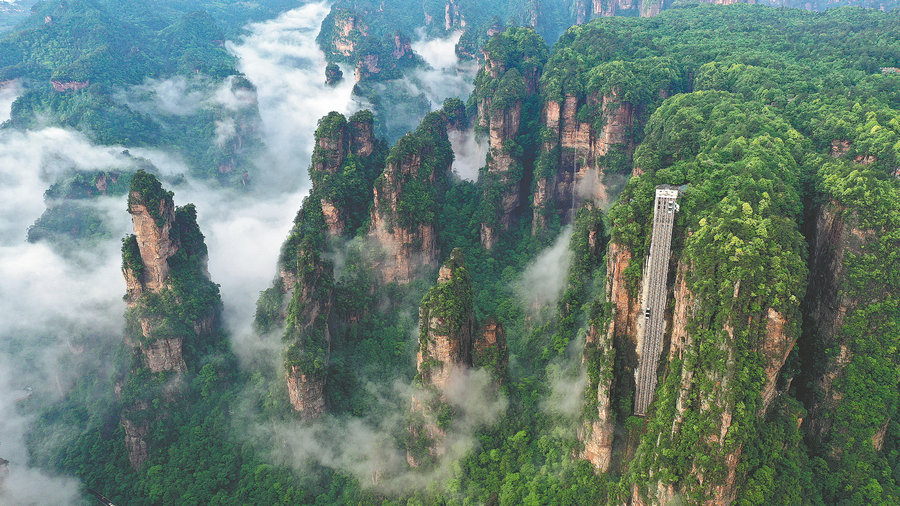
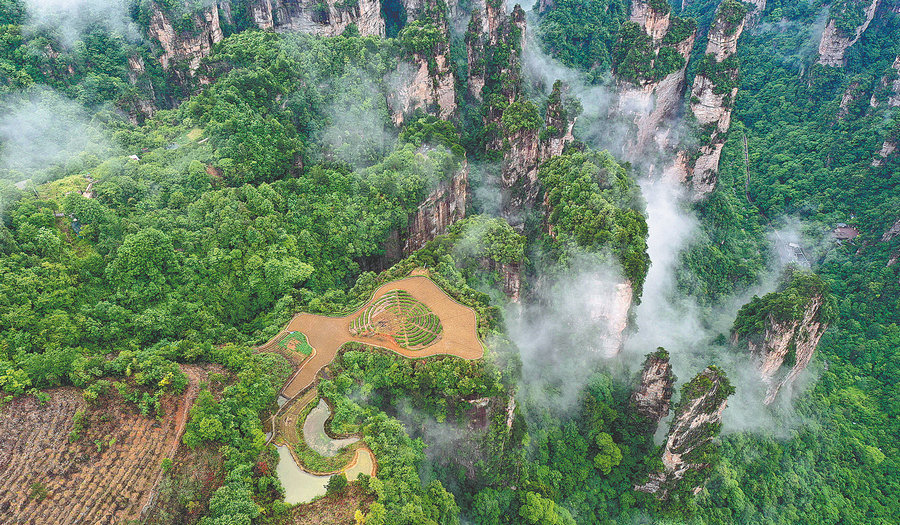
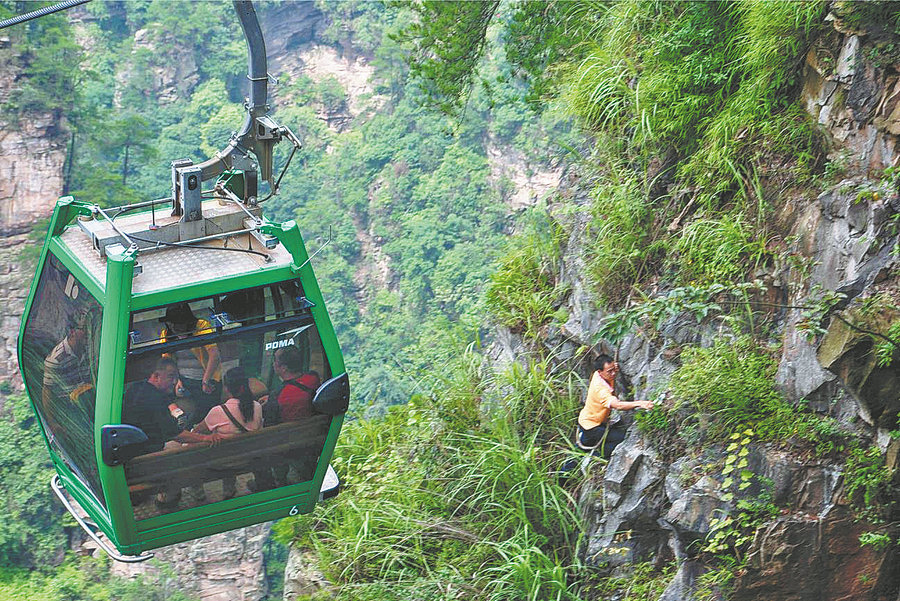


Ranger lets nature work
Editor:田兴雨
Source:China Daily
Updated:2023-10-11 14:48:01
Source:China Daily
Updated:2023-10-11 14:48:01
Special
Contact
Welcome to English Channel! Any suggestion, welcome.Tel:0731-82965627
lisl@rednet.cn
zhouqian@rednet.cn


